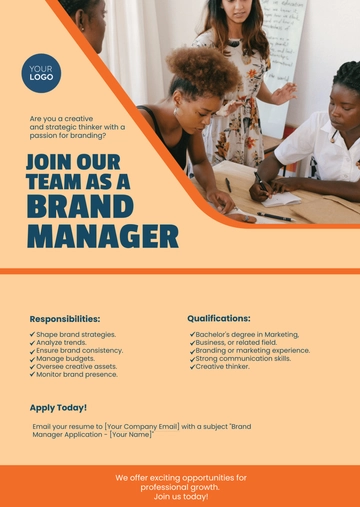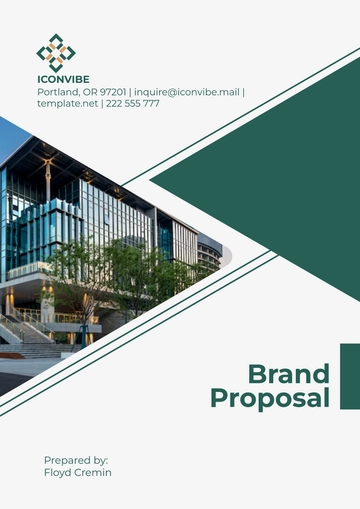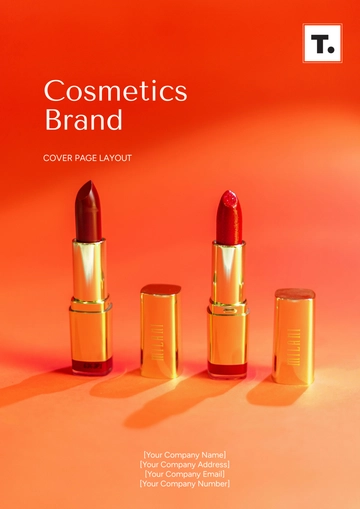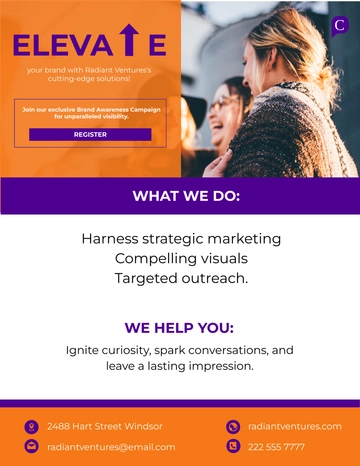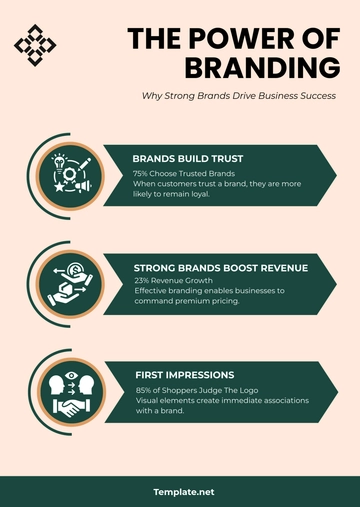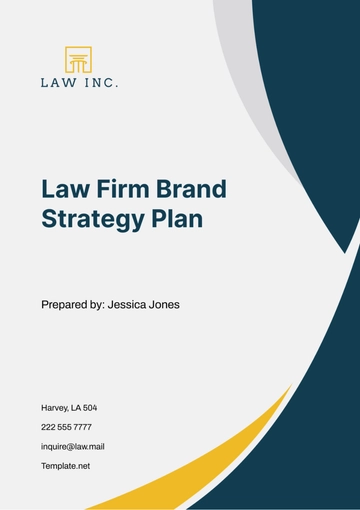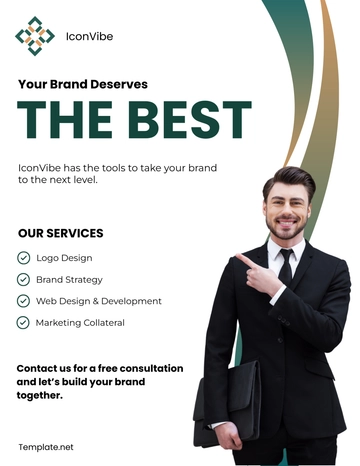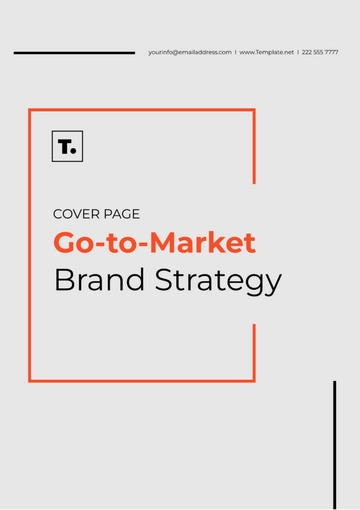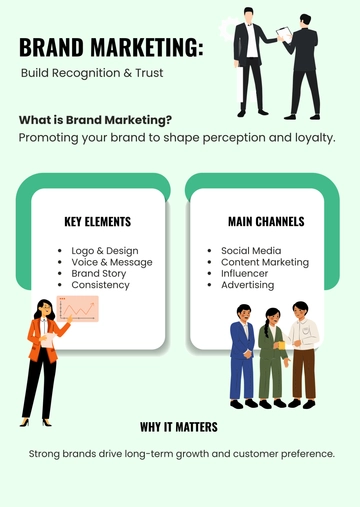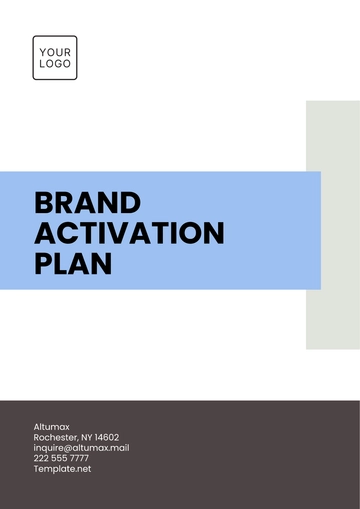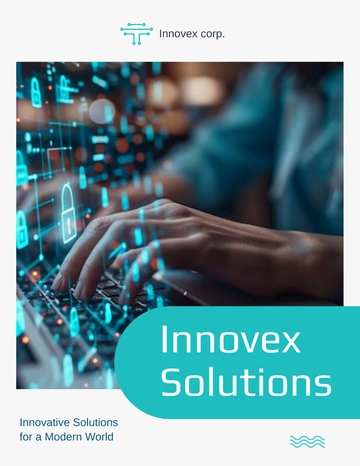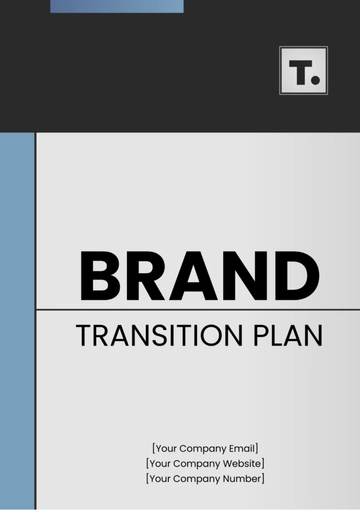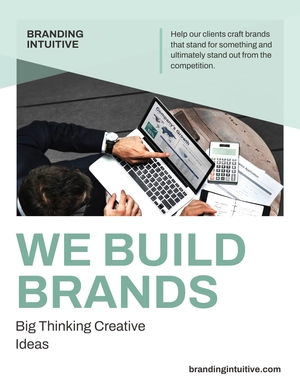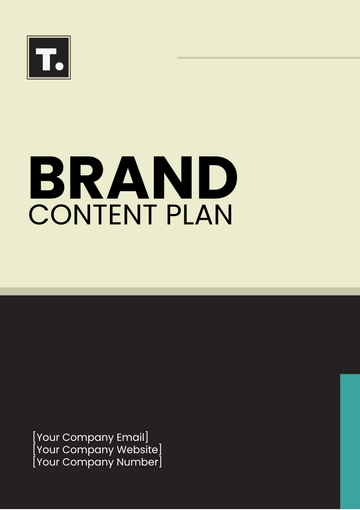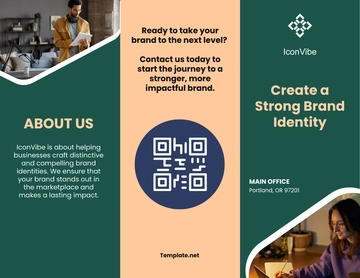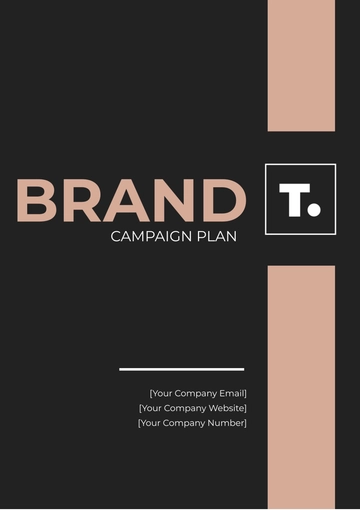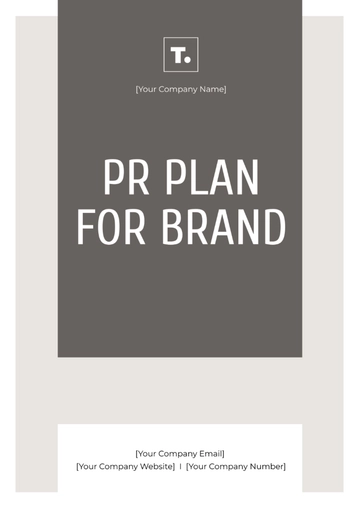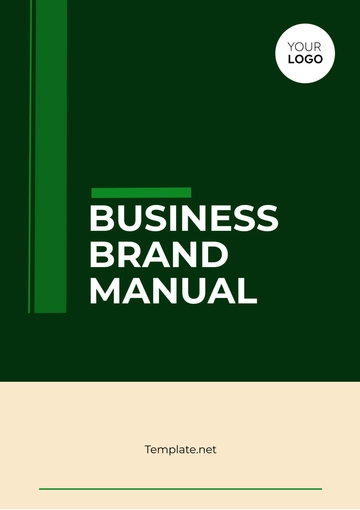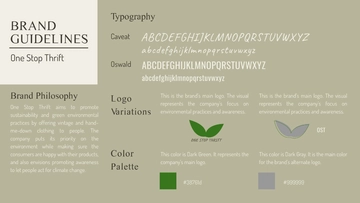Free Marketing Brand Strategy Document
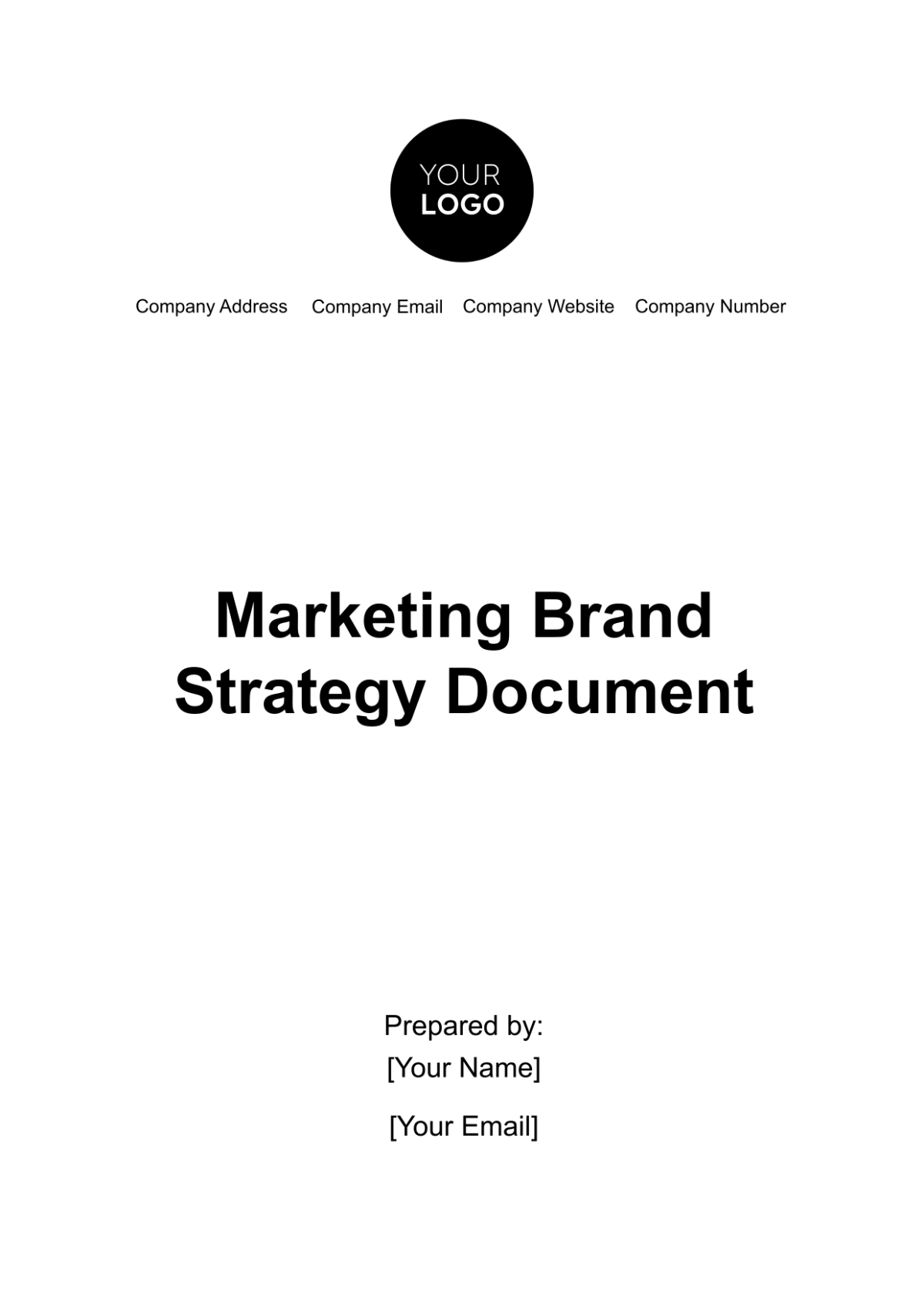
Executive Summary:
In the year [Year], [Your Company Name] has emerged as a trailblazer in the dynamic landscape of technology and sustainability. Since our establishment in [Year], we've thrived by pioneering innovative solutions that resonate with a world hungry for change. Our Marketing Brand Strategy serves as the compass guiding our journey to becoming the global leader in cutting-edge technology.
Amidst a market poised to reach $10 trillion by [Year], we recognize the immense potential of trends like AI, IoT, and sustainable energy. Our brand stands apart with a unique promise: "[Your Company Name]: Pioneering Tomorrow, Today." This encapsulates our commitment to marrying innovation with sustainability, as we strive to redefine the tech industry.
Our brand identity, messaging, and strategic goals harmonize to drive our vision forward. With a solid foundation of innovation, sustainability, and customer-centricity, we embark on a journey to transform industries, energize communities, and lead the world into a smarter, greener future.
I. Introduction
In the ever-evolving landscape of technology and innovation, [Your Company] stands as a beacon of transformation in the year [Year] and beyond. Founded in [Year] with a visionary mission, our company has rapidly become a prominent player in the global tech industry. With a relentless commitment to pioneering tomorrow's solutions today, we embark on this strategic journey to solidify our position as the foremost provider of cutting-edge technology solutions. This Marketing Brand Strategy Document encapsulates our blueprint to harness innovation, sustainability, and customer-centricity to shape a better, smarter, and more connected world.
II. Market Research and Analysis
Our comprehensive market research and analysis serve as the bedrock upon which we build our brand strategy. By understanding the broader market dynamics, our competitors, and the unique needs of our customers, we position ourselves for unparalleled success.
A. Market Analysis
In [Year], the global technology market continues its rapid expansion, poised to reach a staggering $10 trillion. This growth is primarily driven by the relentless march of artificial intelligence (AI), the pervasive nature of the Internet of Things (IoT), and a global shift towards clean and sustainable energy solutions. These trends present both extraordinary opportunities and formidable threats:
Opportunities | Threats |
1. Increasing AI adoption | 1. Regulatory hurdles |
2. Emerging IoT ecosystems | 2. Fierce competition |
3. Demand for sustainable tech | 3. Rapid technological shifts |
4. Smart city initiatives | 4. Cybersecurity challenges |
B. Competitor Analysis
In a world filled with tech giants, [Your Company Name] competes against formidable adversaries, including [Competitor 1] and [Competitor 2]. While these competitors have established their dominance, they possess distinct strengths and weaknesses:
Strengths:
Strong brand recognition on a global scale.
Established a foothold in emerging tech markets.
Diverse product portfolio.
Weaknesses:
Slower adoption of sustainable business practices.
Vulnerability to disruptive technologies.
Limited customization in their offerings.
C. Customer Analysis
Our customer analysis dives deep into the diverse range of individuals, businesses, and governments that constitute our target audience. By segmenting them based on age, income, industry, and location, we can address their unique pain points and needs. Our customers are defined by their eagerness to embrace technological progress, yet they face challenges arising from outdated technology and unsustainable practices. Our analysis reveals critical insights into their preferences and expectations:
Customer Segments | Pain Points | Needs |
1. Tech Enthusiasts | Limited access to sustainable tech | Cutting-edge, personalized solutions |
2. Corporate Clients | Rising energy costs, inefficiencies | Scalable, sustainable tech solutions |
3. Government Agencies | Aging infrastructure, budget constraints | Smart city, energy-efficient solutions |
4. Global Consumers | Environmental concerns, high utility bills | Affordable, sustainable technology |
This in-depth customer analysis guides our strategy, ensuring that we deliver products and services tailored to each segment's specific requirements, thereby cementing [Your Company Name] as the go-to source for innovative and sustainable technology solutions in the years to come.
III. Brand Positioning
At the heart of [Your Company Name]'s marketing strategy is our brand positioning. We define ourselves by a simple yet powerful mantra: "[Your Company Name]: Pioneering Tomorrow, Today." This positioning is our compass, guiding every decision and action we take. It reflects our commitment to being at the forefront of innovation, sustainability, and technological advancement. In an industry saturated with companies, we distinguish ourselves by seamlessly blending cutting-edge technology with a profound dedication to environmental responsibility.
A. Benefits:
Emotional Benefits | Functional Benefits |
1. Inspires hope and excitement for a better future | 1. Delivers leading-edge technology solutions |
2. Evokes trust in our commitment to sustainability | 2. Ensures a greener and more sustainable world |
3. Sparks a sense of wonder about what's possible | 3. Provides personalized AI for a connected future |
IV. Brand Identity
Our brand identity is a visual embodiment of our core values and mission. It comprises several key elements that collectively define the essence of [Your Company Name].
A. Visual Elements:
Logo: Our sleek, futuristic logo features interconnected circuits, symbolizing the integration and connectivity that underpin our technological solutions.
Colors: Dominant shades of blue represent trust and reliability, while green embodies our commitment to sustainability, creating a harmonious balance.
Typography: We employ modern, sans-serif fonts, reflecting professionalism, clarity, and a forward-looking mindset.
Imagery: Our high-tech imagery showcases our products in action, conveying their real-world impact and the transformative potential of our innovations.
V. Brand Messaging
Our brand messaging is the voice of [Your Company Name]. It communicates who we are, what we stand for, and the value we offer to our customers. Centered around the tagline "[Your Company Name]: Where Innovation Meets Sustainability," our messaging encapsulates the essence of our brand, emphasizing our role as a bridge between groundbreaking technology and a greener, more interconnected world. We speak to our customers with clarity, purpose, and a commitment to fostering a sense of wonder and possibility.
VI. Marketing Goals and Objectives
Our marketing goals and objectives are carefully aligned with our brand positioning and overarching mission. They provide a clear roadmap for our strategic initiatives, ensuring that we remain on course in our journey to redefine the tech industry.
A. SMART Goals:
Increase market share by 15% by 2053:
This goal is specific, measurable, achievable, relevant, and time-bound, serving as a benchmark for our growth and competitiveness.
Achieve a 20% year-over-year revenue growth:
A specific and quantifiable objective that reflects our ambition and financial targets.
B. Objectives:
Launch three new AI-driven products by [Year]: This objective underscores our commitment to continuous innovation and expanding our product portfolio.
Establish partnerships with sustainability-focused organizations: It aligns with our brand's commitment to environmental responsibility, creating synergies for mutual growth and impact.
VII. Marketing Strategies
Our marketing strategies are designed to translate our brand vision into action, enabling us to achieve our marketing goals and objectives.
A. Product/Service Strategy:
We are committed to developing AI-driven smart city solutions, sustainable energy products, and customizable robotics. These offerings align perfectly with our brand's focus on innovation and sustainability.
B. Pricing Strategy:
Our tiered pricing strategy caters to diverse customer segments. It ensures that our products and services remain accessible while reflecting their value.
C. Distribution Strategy:
To maximize our reach, we're expanding our global network of distributors while also emphasizing direct-to-customer sales. This dual approach allows us to serve a wide array of clients efficiently.
D. Promotion Strategy:
Our promotion strategy leverages digital marketing, influencer partnerships, and participation in sustainability-focused events. This ensures that our brand message resonates with the right audience and reaches them through multiple touchpoints.
E. Content Strategy:
We are dedicated to creating engaging content across our website, blog, and social media platforms. This content provides valuable insights, educates our audience about our products, and highlights our commitment to sustainability.
VIII. Budget Allocation
Our budget allocation is a strategic distribution of resources to ensure the successful execution of our marketing strategies.
Product Development: 35% of our budget is allocated to research and development to fuel innovation and create cutting-edge products.
Marketing and Promotion: We allocate 25% of our budget to marketing and promotional activities, including advertising, events, and influencer partnerships.
Research and Development: To continue pushing the boundaries of technology, 20% of our budget goes towards research and development efforts.
Sustainability Initiatives: We are investing 10% of our budget in sustainability initiatives, aligning with our commitment to eco-friendly practices.
Operations: 10% of our budget is reserved for operational needs, including staffing, administrative costs, and infrastructure.
IX. Implementation Plan
Our implementation plan outlines the key milestones and activities to achieve our marketing objectives:
Q1: We plan to launch our AI-driven sustainable energy product, showcasing our commitment to sustainable technology.
Q2: Establishing partnerships with major sustainability organizations will expand our influence and credibility.
Q3: Focused expansion in Asian markets will allow us to tap into new opportunities and cater to diverse customer needs.
Q4: A global marketing campaign will be launched, encompassing digital channels, sustainability events, and influencer engagement.
X. Monitoring and Measurement
Our success hinges on continuous monitoring and measurement:
Key Performance Indicators (KPIs): We will track KPIs including sales revenue, market share, and customer satisfaction to gauge the effectiveness of our strategies.
Tools: Utilizing tools like Google Analytics, CRM software, and customer surveys, we'll collect data for analysis and course correction.
XI. Risk Analysis
To anticipate and mitigate potential challenges, we've conducted a thorough risk analysis:
Risks: We've identified potential risks, including technological disruption, regulatory changes, and intense competition.
Mitigation: Strategies for mitigating these risks involve a focus on continuous innovation, dedicated compliance teams, and diversification to minimize the impact of external factors.
Conclusion
In conclusion, the [Your Company Name] Marketing Brand Strategy is our commitment to transforming industries, communities, and the world. Through innovation, sustainability, and customer-centricity, we are poised to lead the way into a smarter, greener future. This document is not just a blueprint; it's our pledge to redefine the tech industry, energize global communities, and pioneer a more connected world.
_________________________
[Your Name], [Position]
This Marketing Brand Strategy Document encapsulates our vision, strategies, and commitment to making [Your Company Name] a global leader in the intersection of technology and sustainability in the year 2060 and beyond.
- 100% Customizable, free editor
- Access 1 Million+ Templates, photo’s & graphics
- Download or share as a template
- Click and replace photos, graphics, text, backgrounds
- Resize, crop, AI write & more
- Access advanced editor
Craft a winning brand strategy with our Marketing Brand Strategy Document Template, found on Template.net. This editable resource offers a comprehensive framework for outlining your brand's positioning and objectives. Utilize our AI Editor Tool for seamless customization tailored to your brand's unique identity. Elevate your marketing efforts with this essential template designed for brand strategists.
